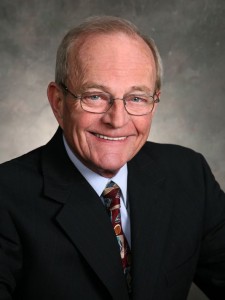[Source: Bonnie Bariola, Florence Reminder & Blade Tribune] – The Florence Town Council, at the March 17 meeting, authorized the town manager to negotiate and enter into a contract with Haydon Building Corporation, not to exceed a cumulative total of $500,000, for design-build services to complete the proposed Padilla Park at Silver King Plaza, Main and Ruggles streets.
“Many people worked hard on this project and I am excited that construction on the park will soon begin. I am grateful to be a part of something that will enhance the experience of visiting our historic downtown and the Silver King Marketplace,” Mark Eckhoff, director of the Florence Community Development Department and project manager for the park, said. “Padilla Park at Silver King Plaza will provide a place in our downtown for our residents and visitors to relax and enjoy the park’s amenities, which will include a water feature, courtyard seating and an inviting turf area.”
Plans are to have a multi-functioning park with three main zones:
First will be a passive patio area for dining and socializing. The area would be an extension of an indoor restaurant space. This will prove to be a great advantage for customers of the current Fudge Shop who will be able to utilize this outdoor space. It would also include additional restrooms to benefit the park and any future restaurants. Initial plans were to utilize the existing carriage house for the restrooms but further examination determined this would not be feasible; therefore, a new building will be built for the restrooms.
Secondly, there will be an active component with a splash pad feature and adjacent sloped turf areas. The sloped areas are being created to help assist with drainage issues and for water retention.
Third, there will be a special event and structured activity component with sloped turf field and stage area.
Once construction begins, estimated time for the project to be complete is six months.
Haydon Pre-Construction Director, Fritz Behrhorst, was present at the council meeting and made a short presentation about plans for the project.
Other members of the project team are: Construction Project Manager Cub Carter and Project Superintendent Pat Wauneka with Haydon Building Corp.; Landscape Architects Mike Park and John Griffin with Environmental Planning Group; Civil Engineer Steve Lewis with Ritoch-Powell & Assoc.; Architect Don Ryden with Ryden Architects; Electrical Engineer Scott Wright with Wright Engineering; and Mechanical Engineer Greg Piraino with Applied Engineering, Inc.
Many of the team members have past experience working in Florence and Pinal County. These projects include the Browning-Miller Readiness Center and the Florence Field Maintenance Shop located on the Florence Military Reservation; the Florence Diversion Dam Road and the Hunt Highway Transfer Station; Silver King Hotel and Adobe Carriage House; First Pinal County Courthouse/McFarland State Historic Park; and the 2nd Pinal County Courthouse.
Recent history of site
This new park behind Silver King Marketplace is just the latest effort to improve the property in a process that began more than 20 years ago.
After many years of neglect the historic Florence/Silver King Hotel fell into extreme disrepair. In the early 1990s Bill Coomer and Katie Montano formed the 501(c) 3 Florence Preservation Foundation (FPF) for the purpose of purchasing and rehabilitating the building. Charter board members included John Swearengin, Boyd Johnson and Billy Early with Steve Cooper, and Joe Gervasio becoming members later. In December 1993 the first Heritage Fund Grant for the project became effective with a 2nd follow-up grant approved in January 1995. It should be emphasized that all these grant and award requests were prepared, submitted, and administered by FPF board members at no cost.
Additional monies made available for this project included a $30,000 donation from Ed Bass/Biosphere 2 Foundation and two $500,000 ISTEA awards through the Arizona Department of Transportation (ADOT).
Other people and organizations who contributed both monetarily and in-kind services were: Pinal County Board of Supervisors, town of Florence, American Express, U. S. West, Gervasio Engineering, Waste Management, BHP Copper, Arizona National Guard, Biosphere 2 and Porter Construction.
The original Heritage Fund grant from Arizona State Parks/SHPO was for Acquisition and Stabilization. Legal assistance for the purchase was provided by the Attorney for Biosphere2. Acquisition was accomplished on July 11, 1995. Through the competitive bid process, an architect, Don Ryden with Ryden Architects, was hired and construction documents were prepared for stabilizing the then existing five buildings that formed the hotel complex.
Unfortunately on January 17, 1996, a fire created the need for an adjustment in the Scope of Work which was prepared and subsequently approved by the State Historic Preservation Office (SHPO). The architect and engineer recommended concentrating efforts on the two buildings which are still standing — the brick building and the adobe carriage house. The remaining buildings had to be destroyed.
FPF board members organized a massive cleanup which was performed by volunteers at the hotel site in March 1996. The donation of labor and equipment for this event saved thousands of dollars in cleanup costs necessitated by the fire.
From 1996 until 2006 the FPF continued working toward the complete rehabilitation of the building with their limited funds. First phase rehabilitation was completed for approximately $750,000. The 2nd ADOT Award of $500,000 with a $32,000 Heritage Fund match was thought to be sufficient funding to complete the project. But when bids were received the funding was $250,000 less than the lowest bid.
Unfortunately Katie Montano, who had spearheaded the rehabilitation, passed away. The remaining members of the FPF Board decided to ask the town if they would assume ownership of the buildings and grounds as well as the remainder of the grant funds (architectural fees had been spent) and take care of the additional $250,000.
The town manager approached the Town Council with this suggestion and they agreed to this proposal. The $32,000 Heritage Fund Grant, which was matching funds for the $500,000, remained in the FPF’s name and was administered by their board members. In addition, the FPF also contributed an additional $25,000 cash to the town toward the rehabilitation.
As a result, ownership of the building and property was transferred to the town of Florence in 2006 with complete rehabilitation completed in 2009. Thanks to the FPF for working toward the rehabilitation of the building for 16 years, it now provides a landmark for Padilla Park.
Ophelia Padilla had always told the FPF Board that she would sell the adjoining lot to whoever developed the Silver King. Thus, with the purchase of her lot by the town and plans for Padilla Park, the people of the Town can now have a beautiful meeting place in Downtown Florence.


You must be logged in to post a comment.